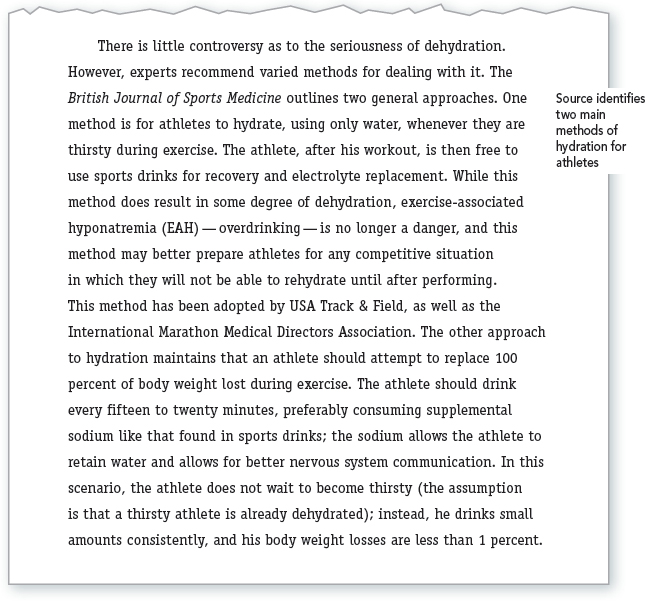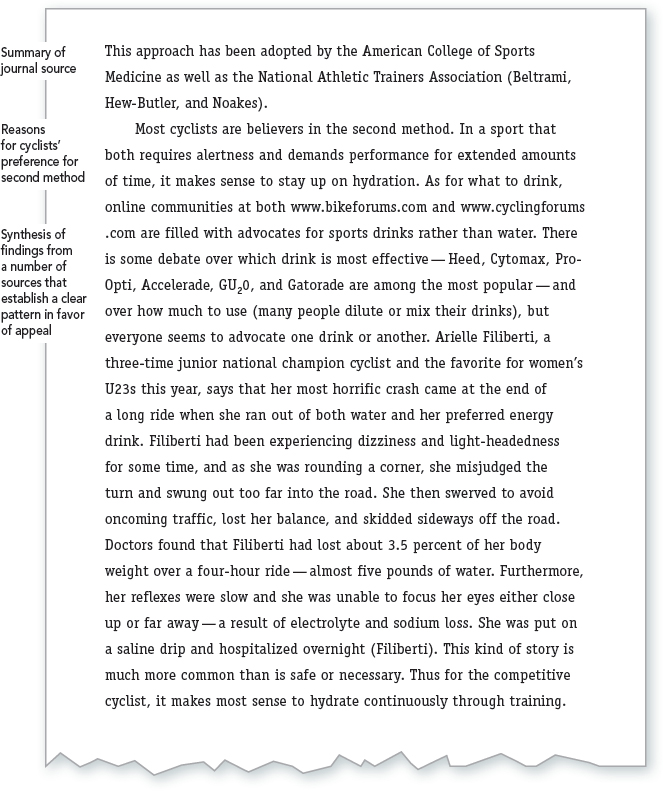12f Synthesizing sources
Contents:
When you read and interpret a source—
To synthesize sources for a research project, try the following tips:
- Read the material carefully. Don’t just grab a quotation and move on—
make sure you really understand. For tips on reading with a critical eye, see Chapter 7. - Understand the purpose of each source. Make sure the source is relevant and necessary to your argument.
- Determine the important ideas in each source. Take notes on each source (12g). Identify and summarize the key ideas of each piece.
- Formulate a position. Review the key ideas of each source and figure out how they fit together. Look for patterns: discussions of causes and effects, specific parts of a larger issue, background information, and so on. After considering multiple perspectives, decide what you have to say.
- Summon evidence to support your position. You might use paraphrases, summaries, or direct quotations from your sources as evidence (13b–d), or your personal experience or prior knowledge. Integrate quotations properly (see Chapter 13), and keep your ideas central to the piece of writing.
- Deal with counterarguments. You don’t have to use every idea or every source available—
some will be more useful than others. However, ignoring evidence that opposes your position makes your argument weaker. You should acknowledge the existence of valid opinions that differ from yours, and try to understand them well before explaining why they are incorrect or incomplete. - Combine your source materials effectively. Be careful to avoid simply summarizing or listing your research. Think carefully about how the ideas in your reading support your argument. Try to weave the various sources together rather than discussing your sources one by one.
Using sources effectively can pose challenges (12b). Even after you have evaluated a source, take time to look at how well it works in your specific situation. And if you change the focus of your work after you have begun doing research, be especially careful to check whether your sources still fit.
A student’s synthesis project

Caroline Warner’s full research-


Note the way Caroline identifies important information from a journal and expands on the significance of the information in her discussion of sources from two Web sites for cyclists and a personal interview. All of these sources are synthesized to support her own claim that continuous hydration with sports drinks is the best way for cyclists to combat the threat of dehydration. (For more on synthesizing sources, see Chapter 13 and 15d.)